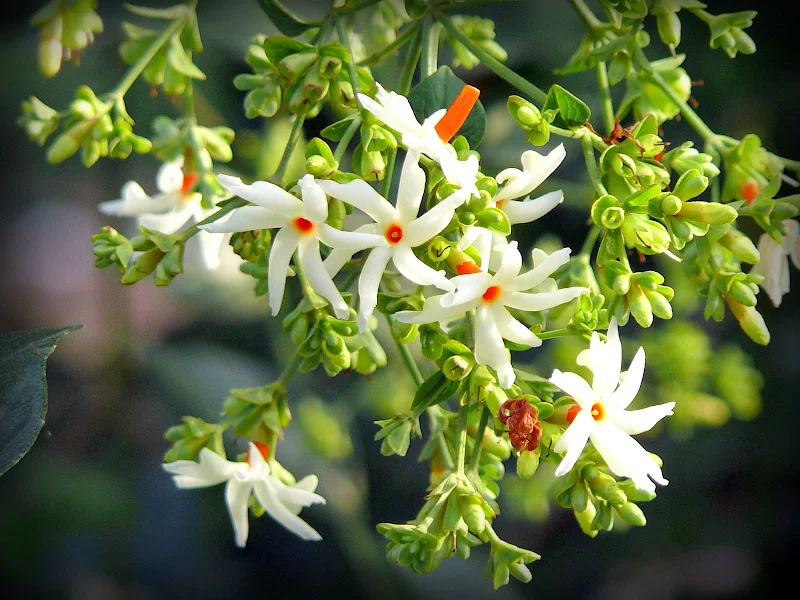The preparations begin months in advance when the artisans begin to draw inspiration for clay idols of Durga. By means of bamboo sticks cut in various shapes and sizes, they manage to make the basic structure of the idols of the goddess and the platform in which the colossal figure will be displayed, but they also use everything they find at hand from plastics to reconverted elements. This is a long and delicate process as there is always the risk that they will break and have to start over again.
In a diligent and methodical way, the craftsmen strive to create exquisite pieces of art. The most qualified perform, with great care with fine clay. The sculptures have a great aesthetic sense and their execution is organized according to the neighborhood associations, which will house the Durga, that is to be worshipped by friends and neighbors. In short, every year the festival translates into hours and hours of endless preparations.
During the weeks of Durga Puja, life seems to stop completely for the entire state of West Bengal, as well as in large enclaves of Bengalis around the world. In Calcutta, this is a period of crowds, colors, and music, where suddenly all flock to the streets.
It is a deeply felt and colorful celebration that blends craftsmanship, artistic flair, and architectural knowledge. A set of terracotta images, statues, and paintings of Durga decorate the streets of the city, placed in special temporary structures in playgrounds, squares, plazas and anywhere there is a free space until the end of the puja.
The pandals made of bamboo and cloth, are laid in open space for the visits of the faithful from morning until late at night. The pandals are the tangible form of worship of the goddess and with the participation of citizens become the true religious art and celebration of the life of this chaotic city.
While some pandals are simple structures, others are often designed as works of art with themes that rely heavily on history, current events, and sometimes pure imagination. The shapes and dimensions of the pandal are at the generosity of its more or less well-off inhabitants, ranging from the most traditional, decorated with woven reeds and covered in straw mats, to those most pretentious, replicating the great architecture terracotta temples or white marble carvings exhibiting virtuously in polystyrene.
In fact, visiting the pandal in recent years, one could say that the Durga Puja is the largest outdoor art show in the world. In the 90s, a large number of architectural models grew on the outer parts of the pandal, but today the architectural motifs also extend to the elaborate interiors, executed by skilled artists, with consistent stylistic elements, carefully executed and signed by the artist himself.
From the folk to the most eccentric architectural experiments using throw-away, thatched huts to those pointed by the Thai flavor, to the Wizard of Oz, to that naive floors and bright colors, each isolated pandal reinterprets the arrival of Durga in a new context, to imply playfully to its permanent validity.
The themes that inspired pandal and idols are often the distinctive sign of the community, especially in Kolkata, starting from the 1990s. The Puja committees decide on a particular theme, the elements of which are incorporated in the pandal and the idols. Popular themes include ancient civilizations such as the Ancient Egypt or Inca. Contemporary Subjects like the Titanic and Harry Potter also have been the subject of some pandals.
The design and decoration are generally made by local students of art and architecture. The financial resources required for these themes are generally higher than those needed to make figures based on traditional themes. They attract the crowds and are well accepted by visitors. Following the example of Kolkata, the pandal theme has become popular even in neighboring states, particularly in Orissa.
For the most heartfelt celebrations of Bengal, Calcutta becomes the Eastern Rio De Janeiro as tens of millions of visitors immortalize the imaginative staging of typical pandals, from the traditional to the more eccentric, to celebrate the victory of the Goddess, loving mother and ruthless warrior at the same time.

Durga Puja makes me long for my childhood when we were happy and we had no problems. For a few days, the whole world seems to enter into another dimension where there is only love, peace, solidarity and of course, happy people, or at least, smiling ones. The whole society imposes on us to live these days as an idyllic time in which everything is positive. But above all, the atmosphere was what changed. Everything was more cheerful. The devotional chants sounded on the radio with the smell of the shiuli flower from the parijat tree filling the senses.
I remember more than once waking up in the middle of the night during a weekend trip from Kolkata and finding myself in a bed full of family members, and hearing them still sing and talk and laugh. Thus we have all come out of singing, happy, with the same desire to live.
In the five-day celebration of Durga Puja, in Calcutta the atmosphere lights up somewhere between Christmas and the Carnival with amazing psychedelic neon lights, the race for shopping, the tub in the neighborhood streets to show off new clothes and the least simple as possible, the music at full blast, mass elation, and of course, the pandal-hopping.



Calcutta is beautiful! I would love to go and learn about the ancient history there.
ReplyDelete